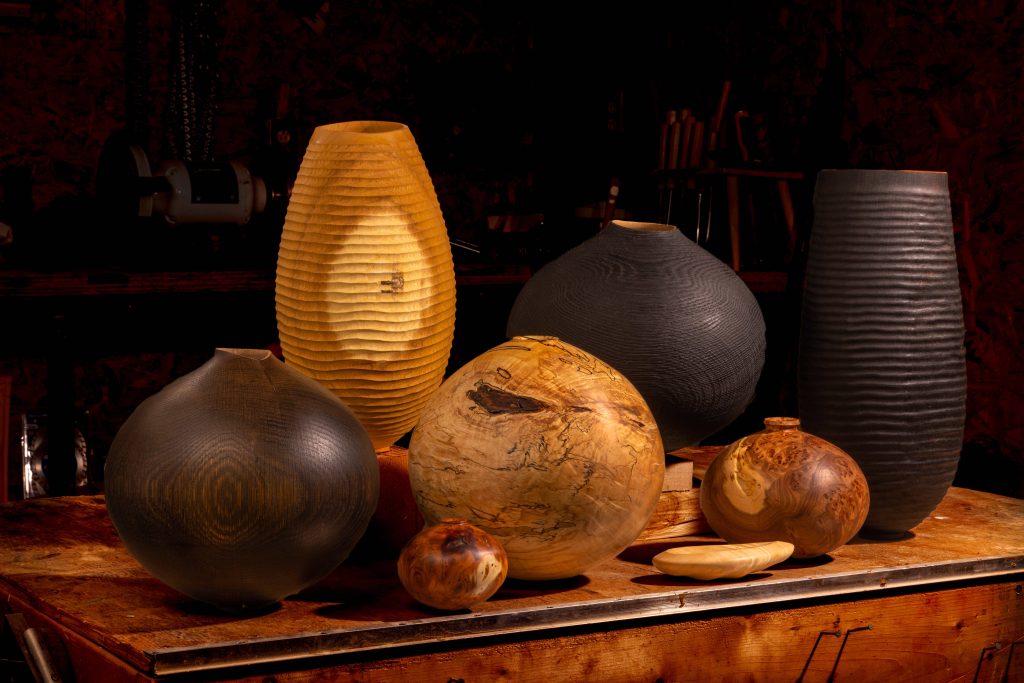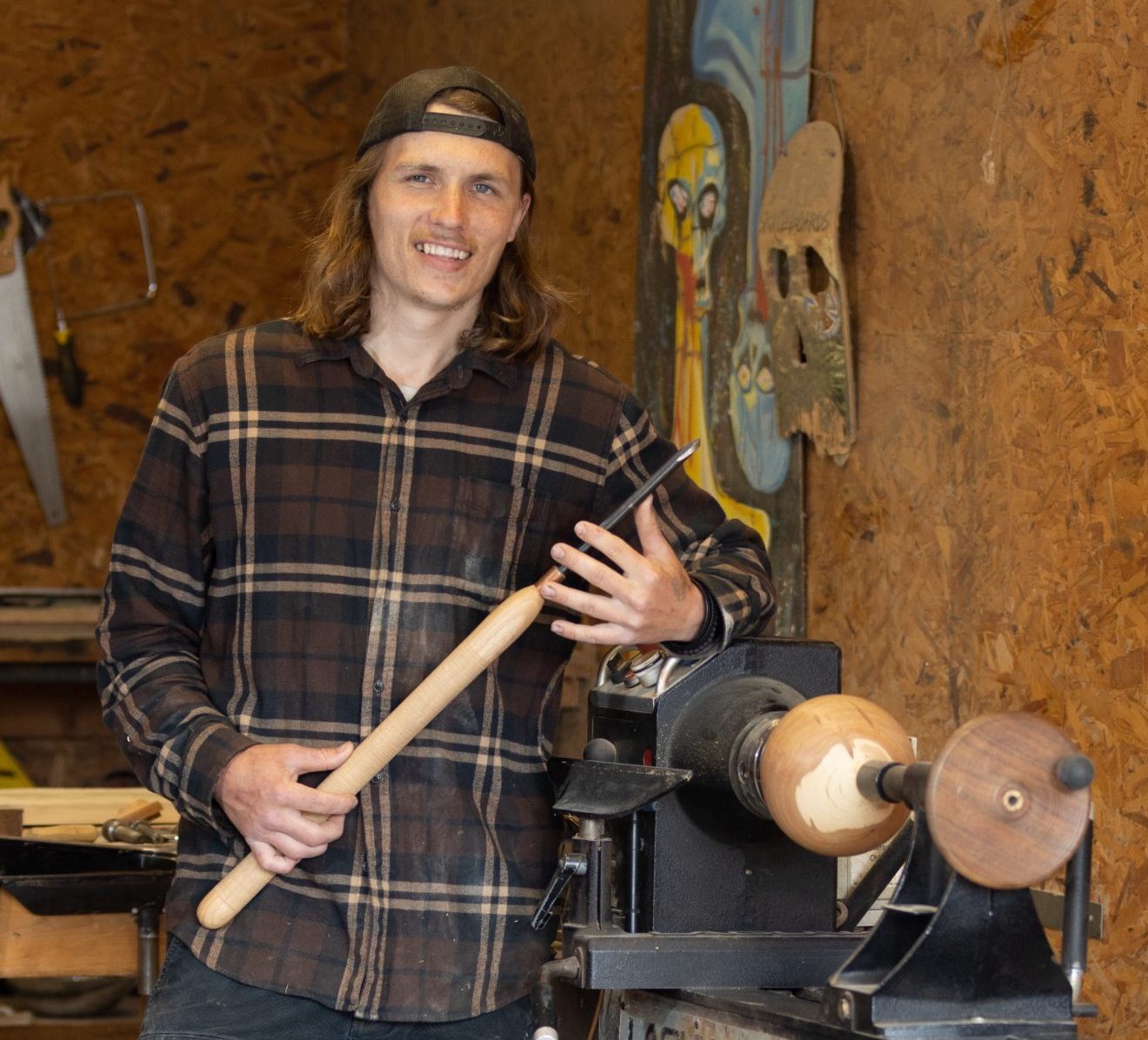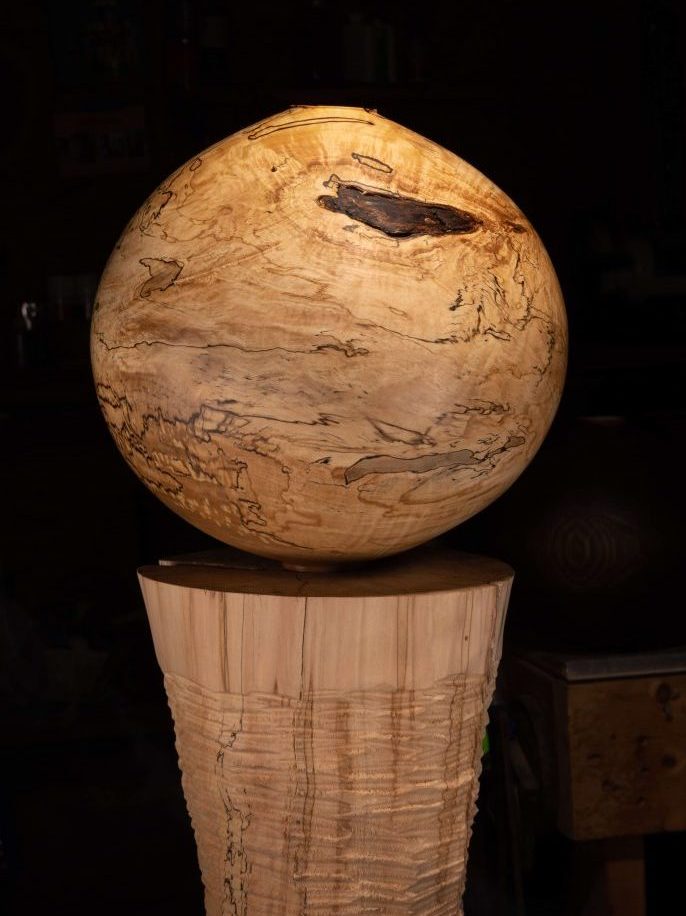Tyler Jamison’s passion brings out the beauty in wood
Tyler Jamison carves and turns wood, emphasizing texture, highlighting grain. But he’s not working with just any old wood he finds. Each piece is carefully selected, each unique to itself due to the spalting that occurs in a tree when it’s infected with a fungus. It creates within the wood beautiful dark swirling veins, making Tyler’s finished vessels look like they were painted by the hand of God.
He also turns burls, the growths found on the side of trees. Within these burls the grain of the wood is twisted in a variety of combinations. They make for colorful mosaics in his finished products.
“I can never make the same pieces twice,” Tyler says. “I’m very interested in what’s going on in the wood. I feel an intimate connection with it. It brings me a lot of peace and makes me happy to see the raw wood come to its finished form.”

Don’t be fooled by the beauty of the woods he uses. Wood turning is an intricate and often dangerous art form. In fact, the more beautiful a piece of wood, the more difficult and dangerous it can be to turn. While the fungus creates beautiful marks, it also causes deterioration, leaving voids throughout the wood.
Often working through a hole less than an inch wide, Tyler may be using a specially shaped gouge or chisel to carve deep inside the vessel as it spins rapidly on a lathe. Unable to see the tools as they cut, he is left with nothing but feel. This can lead to a piece quite literally exploding in front of his eyes. But it’s a worthwhile risk, he says, to create something that you love.
While it’s obvious this sculptor has an incredible amount of talent, he is the first to readily share credit for his work. “As the water releases from the wood, it makes the wood warp and shrink. It gets a bit wonky, which I love,” he says. “But it’s all Mother Nature’s doing. I just turned a simple form, and the wood does the rest.”
Simple might be an understatement. Each piece can take as long as two weeks to create. When asked what he does with the ones that don’t measure up to his expectations, fiancé Tara Watson—who handles his marketing and often helps with design—answers, “He puts them on the burn pile. I really hate the burn pile.” Each artist has their own personal standard, and Tyler is no exception. If he is not happy with a piece, it won’t make it out of his shop.


Preferring to work with local hardwoods, Tyler seems to have a knack for finding those exotic pieces in the most unexpected of places. One of his favorites to work with is the root ball of the yew, though those pieces are difficult to come by. Tyler rarely lets the opportunities pass him by. While working on a landscape project, he spotted a yew bush that was slated for removal and offered to dig it up. The root ball was turned into one of his most prized pieces in his collection.
A Pennsylvania native, Tyler has been in the Knoxville area for nine years. Though he’s always been drawn to woodworking, a show at the Emporium three years ago carved out his creative direction. “It was a Tennessee Craft Guild Show, and Gordon Fowler was turning wood on a lathe,” he recalls. “I was fascinated with it. I went home and bought a lathe.” His love of carving hollow forms into simple shapes that allow the wood grain to sing grew.
Tyler sells his art on Etsy, and occasionally at local festivals. He leans toward creating artistic pieces rather than ones designed for function, knowing that each and every one is as distinct as the one before it. “I make them for people to enjoy seeing and holding.”
Head to www.tpjwoodsculpting.etsy.com to view Tyler’s work. If you would like to commission Tyler for a custom piece you may reach him at tpjwoodsculpting@gmail.com.

Comments are closed.